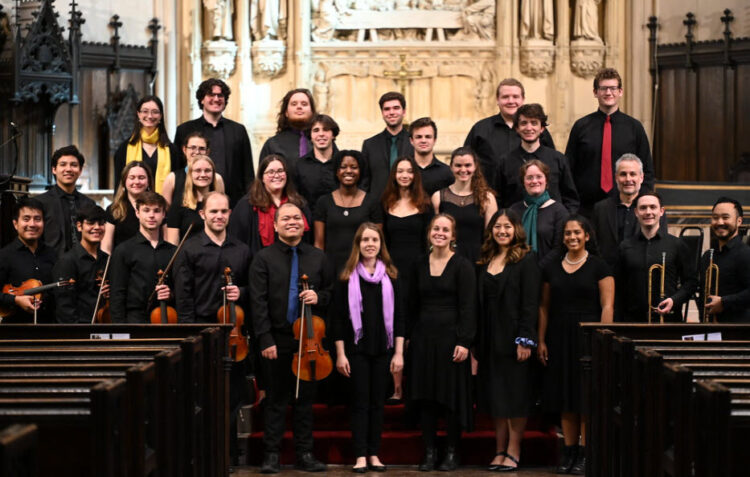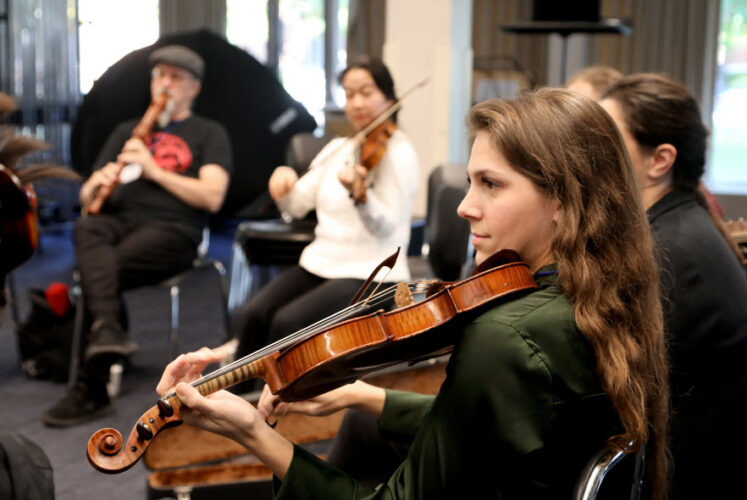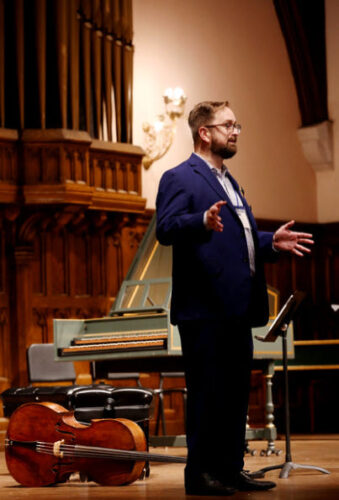‘The revolution of the next 40 years will likely be more about what constitutes early music and who is invited to play’
This column was first published in the September 2024 issue of EMAg, the Magazine of Early Music America.
In 2025, Early Music America will celebrate 40 years of serving the historical performance community of the Americas. Over the course of the next year, we will no doubt publish reflections on where we were four decades ago and how much has changed since then. In fact, we’re hoping our longtime members will send us reflections and photos in the coming months. Please reach out if you have something to share.

There’s certainly a lot to celebrate in terms of visibility of the field and the respect we’ve earned in the larger classical music world. Yet there’s still so much vital work to be done. It’s important to beg the question: What do we want the world of historical performance to look like 40 years from now?
The revolution at the start of the early-music movement was all about redefining how we play and on what instruments. There have been heated debates about all manner of performance practice issues, some of which have played out in EMA publications. There have also been remarkable discoveries of lost repertoire from some of Europe’s great musical hubs. As a Baroque violinist, I, for one, am so glad that composers like Dario Castello and Giovanni Antonio Pandolfi have been rediscovered and become almost mainstream.
These debates and discoveries will of course continue, but the revolution of the next 40 years will likely be more about what constitutes early music and who is invited to the table to play that music. Yes, the definition of early music has been expanding for some time now — music from the Classical and Romantic eras has been common on “early music” concerts for well over a decade, and folk music, too, particularly from the British Isles.

Newly composed music for early instruments is a relatively new phenomenon. I suspect we’ll see a lot more of this in the coming decades, and composers will get better at it. (We’ve all played at least one horribly awkward new composition that might as well have been for modern instruments!) In a field dominated by compositions from dead white guys, playing brand-new music has given us a way to better reflect the diversity of our audiences.
We’re also exploring folk music in a different way. A much broader spectrum of folk traditions from all over the globe is being looked at with a historical performance lens. Over the next 40 years, I’ll be curious to see how scholars and performers find ways to bridge the gap between early music’s time capsule approach and folk music’s unbroken tradition approach.

And as we explore global traditions, we will have to continue to do better about respecting and honoring the cultures we’re exploring — tokenism and cultural appropriation abound in our current early-music landscape.
Expanding what we play is part of making space for more diversity on stage. But so is dismantling systemic racism and tearing down financial barriers to entry into the field. There is so much work to be done to create a safe, welcoming, and financially viable place for BIPOC artists in early music.
I hope that in 2065, I’ll be hobbling into brilliant concerts of ancient music from around the world, performed by intrepid artists from all cultural backgrounds, fusing all the best knowledge from ethnomusicology, musicology, music theory, performance practice, organology, cultural anthropology, and archeology into performances that elicit spontaneous and riotous applause!
Not a current EMA member? Join or renew today!
David McCormick, a Baroque violinist, is the executive director of Early Music America, artistic director of Early Music Access Project (Charlottesville, Va.), and a founding member of medieval ensemble Alkemie.

